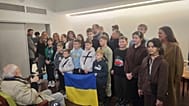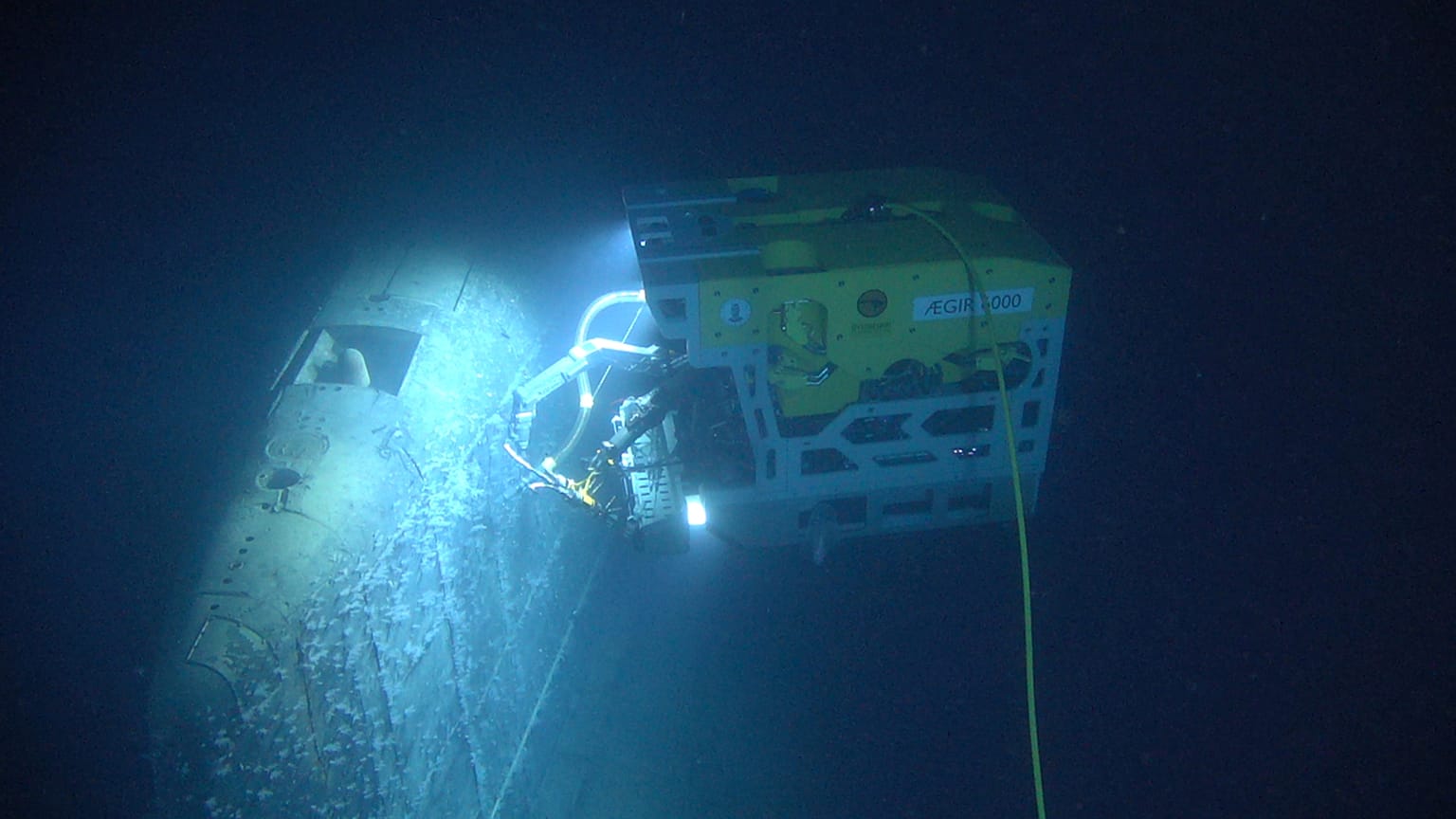Robot-recovered samples from the Soviet-era submarine which sank in the Norwegian Sea reveal high levels of radiation, but scientists say there's no danger to fish or humans.
A Russian nuclear-powered submarine which sank in the Norwegian Sea 30 years ago is leaking high levels of radiation – but scientists say the situation is “not alarming”.
According to Norway’s Radiation and Nuclear Safety Authority (DSA), the level of radioactive caesium found in one sample was 800,000 times higher than normal.
However, other samples found much lower levels of radiation – and the wreck is not said to pose a danger to people or marine life.
The Komsomolets was a nuclear-powered attack submarine, built in the early 1980s. More than 100 metres long, the new addition to the Soviet fleet could dive much deeper than American submarines at the time.
Submarines were seen as playing a crucial role in countering the threat from US aircraft carriers.
In April 1989, fire broke out on board the vessel, it’s thought after a high-pressure air supply line burst. The fire itself killed only a handful of sailors – but dozens of others died from the cold as they awaited rescue.
Of 69 crew members, 42 were killed – the vast majority from hypothermia – and 27 survived.
The submarine sank to the bottom of the Norwegian Sea – a depth of nearly 1,700 metres – and carried with it two nuclear torpedoes with plutonium warheads.
'Cloud' seen rising
The wreck has since been monitored regularly by both the Norwegians and the Russians. Norway’s DSA and Institute of Marine Research (IMR) have carried out joint annual surveys for over 20 years.
But this week investigators have had the chance to explore the sunken vessel in unprecedented detail, thanks to a remotely-operated mini-submarine which was able to take samples.
It is the first time investigators have been able to “see” the wreck, despite having previously taken samples of seawater and sediment.
The researchers noted a “cloud” rising from a duct, believed to be the source of the leak. Shortly afterwards, they took the sample that revealed very high levels of radioactive caesium – compared to what is normal in oceans.
However, expedition leader Hilde Elise Heldal said the levels were not dangerous, the IMR reported, and well below the limit of radioactive caesium permitted in food products.
The high levels of radiation were found only inside the ventilation duct and not in the surrounding water, Heldal said, while the depth of the submarine on the sea bed means there are few fish nearby at risk of harm.
The results so far are preliminary findings; further samples are due to be analysed later.
Questions over Russian submarine safety
The exploration comes days after another fatal accident involving a Russian submarine. Earlier this month Moscow confirmed there had been a fire on a top-secret nuclear powered submarine – killing 14 sailors.
The Russian authorities have been accused of covering up details. The submarine’s name and mission were said to be “state secrets”.
However, Defence Minister Sergei Shoigu said the on-board nuclear reactor was “operational” after the crew took action to protect it. An unconfirmed report by Open Media – run by exiled Kremlin critic Mikhail Khodorkovsky – quoted a senior official as having said a far more serious disaster had been averted.
In 2000, the year President Vladimir Putin came to power, 118 Russian sailors were killed after an explosion on the Kursk nuclear-powered submarine – despite an international race to find survivors. It was one of the worst peacetime submarine accidents.















